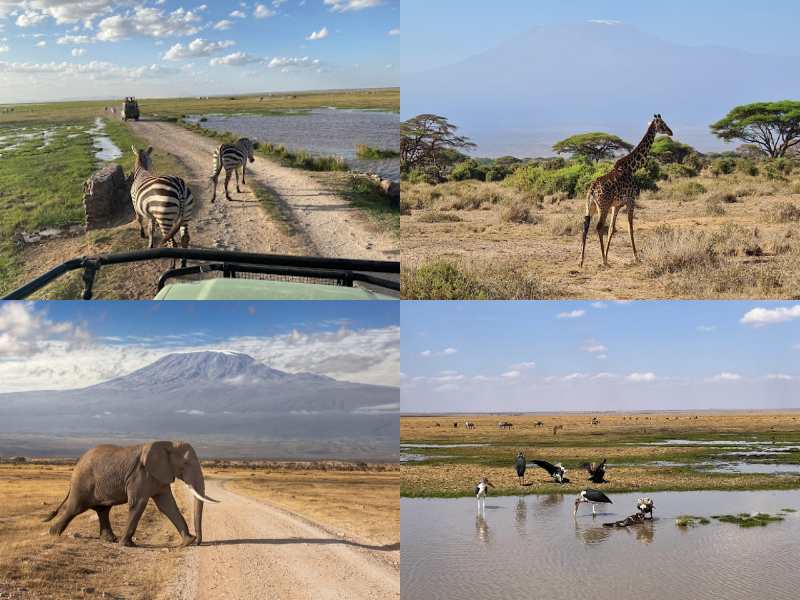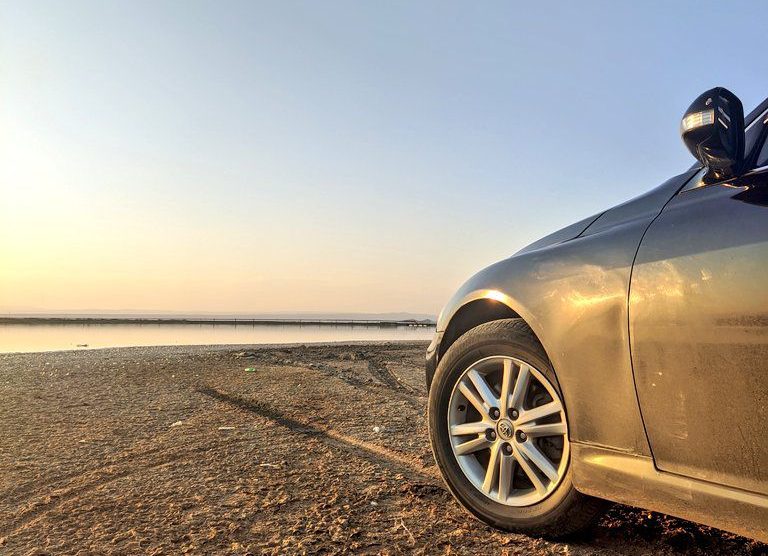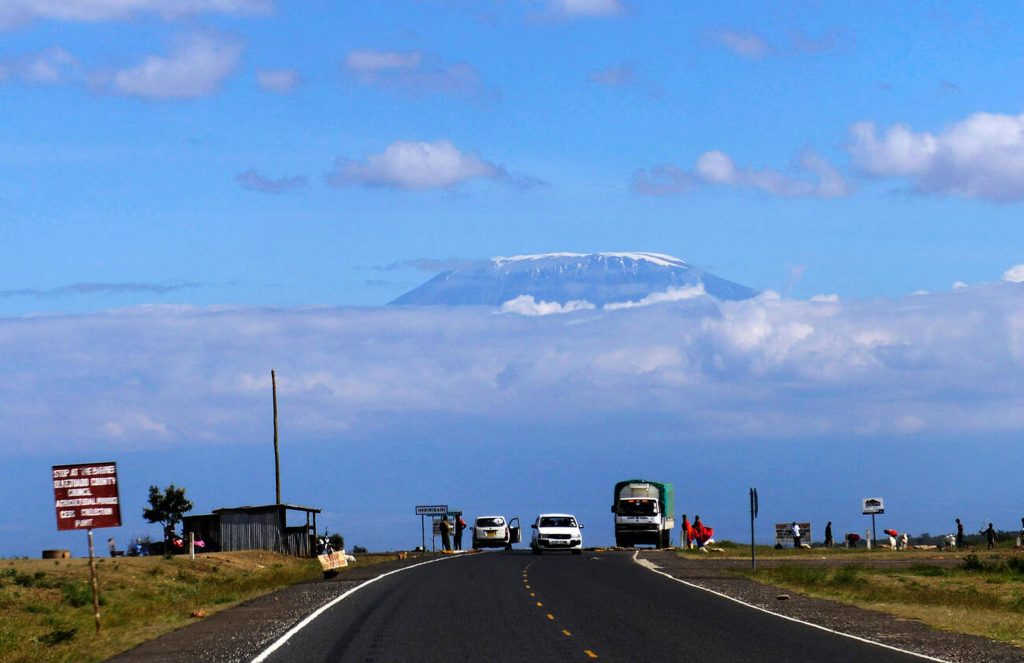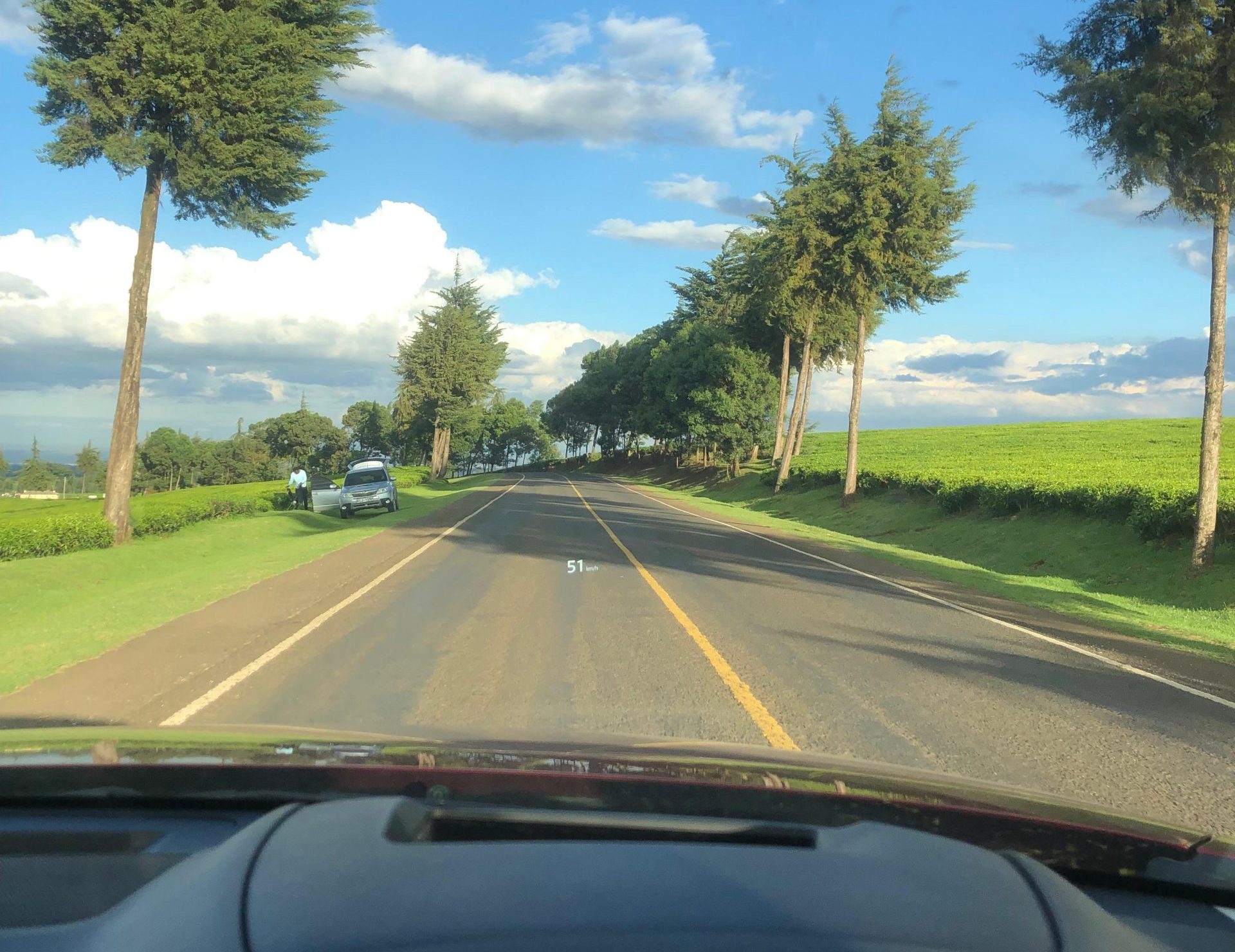by Davis Kinanga
Road trips in Kenya offer various activities for travellers seeking adventure, cultural immersion, and scenic beauty. Blessed with rugged mountains, wildlife-rich savannahs, dense forests, blissful beaches, and lovely spots, Kenya is an attraction for scenic drives. Due to its unique landscapes, Kenya has gained the attention of many local and foreign tourists and road trips have become the ultimate vacation activity.
When driving around the Great Rift Valley and Western Highlands, you could make stops every few minutes to take in the sights or snap a photo. Most roads in Kenya are easy to navigate, but some routes (like those in Northern Kenya) require a car that can handle off-road terrain.
My Favorite Road Trips
- Emali – Loitoktok (100km)
This 100-kilometre road, also known as C102, is quite a scenic drive. It starts from Emali Township on the Mombasa-Nairobi highway and goes all the way to the Loitoktok border. It’s best to take the drive early in the morning to enjoy the views of the Emali to Loitokitok plains, with many low hills visible from the tops of the hills in Kilome.
It’s also worth noting that Emali has a tarmac exit to Tanzania through Loitokitok, which could be a great option for those looking for a less busy route for adventure or a shorter route to the coastal towns of Tanzania. This road also provides quick and easy access to Amboseli National Park and Mt. Kilimanjaro, as well as the many luxury camps and hotels in proximity to Mt. Kilimanjaro.

2. Mwatate – Wundanyi (22.5km)
Nestled in the picturesque Taita Hills, Wundanyi Town in Taita Taveta County is blessed with awe-inspiring views. The landscape is simply breathtaking, captivating the hearts of all who visit the town that lies about 20km west of Voi Town. While ascending on the Mwatate-Wundanyi road, the lush rolling hills stretch out as far as the eye can see, creating a harmonious balance, and painting a picture of natural beauty.
Wundanyi is a haven for nature lovers, offering countless opportunities for hiking, exploring, and immersing oneself in the stunning surroundings, leaving visitors in awe of the wonders of the breathtaking scenery.
3. Nyeri to Nanyuki to Timau to Isiolo to Meru (265km)
This route is considered one of the best in Kenya. After navigating the winding roads of the Nyeri-Kiganjo route, take a break and admire the breathtaking views of the valleys. This area is known for its scenic beauty, which is even more impressive after it rains and the greenery comes to life. Along the way, you can stop at Nanyuki and Isiolo to enjoy the picturesque scenes of the hilly terrain.
If you’re looking for an off-roading adventure, drive from Nanyuki to Timau on unpaved roads, trails, and rough terrain. This route is surrounded by expansive wheat fields that offer stunning views and a refreshing breeze. Just make sure to prepare your all-terrain tyres and get ready for an unforgettable ride.
4. Nairobi to Turkana (700km)
Visiting Lake Turkana National Park is an adventure worth the effort for travelers. The region features stunning, arid volcanic landscapes surrounding a salty, crocodile-filled crater lake known as the “Jade Sea.” Additionally, there are traditional fishing villages and communities to explore.
If you’re travelling from Nairobi, it takes approximately six hours to reach Samburu National Reserve, which is about 300km away. Spending a night in a tented camp by the river is a great way to enjoy the beautiful setting. On day two, a shorter four- to five-hour drive will take you to Marsabit National Park, an unexpected oasis of green in the desert and home to an extinct volcano. Spending a night at Kalacha, which is located on the edge of the Chalbi Desert (around four hours from Marsabit), is an excellent way to experience solitude and the desert landscapes before embarking on an eight-hour drive to Loiyangalani on Lake Turkana’s eastern shores.
The highlight of the trip is walking and exploring the “Jade Sea” of Lake Turkana, with its crocodiles, hippos, and migratory birds. The El Molo tribe, one of Kenya’s smallest communities, lives in this region and makes a living from fishing. They braved the crocodile-filled waters to do so.
5. Nairobi to Magadi (112km)
If you’re looking for a rewarding journey with a beautiful lakeside view near Nairobi, head south to Lake Magadi. Known as Kenya’s “pink lake,” it’s home to flamingoes and other wading birds. Along the way, you can stop at Nyama Choma restaurant at Olepolos Country Club for lunch. While you’ll find plenty of roadside stalls serving grilled goat meat, barbecued chicken, and crunchy corn snacks, Olepolos is a relaxing spot with great views and hiking trails.

After lunch, drive past acacia trees and traditional villages until you reach Lake Magadi. This soda lake is a lovely lakeside spot, especially at sunset. You can bring a picnic or head to the Lake Magadi Sports Club and Tented Camp for lunch, which also serves good food. If you want to stay overnight, you can choose between comfortable rooms and safari tents.
6. Chebilat – Ikonge – Chabera (38km)
The scenic Chebilat-Ikonge-Chabera road is between the counties of Nyamira and Kericho. The C22 38-kilometre road is breathtaking with a drive through tea plantations. It’s a relatively short road, but it offers a beautiful driving experience, especially during the rainy season when the lush greenery is at its peak.
Apart from the expansive tea plantations, you’ll encounter charming villages along the way, showcasing the local culture and way of life.
7. Voi – Mwatate – Taveta – Holili
The A23 Voi-Taveta road is one of the finest roads in Kenya, passing places like Mwatate, Taita Hills and Tsavo West National Park and seeing wild animals beside the road. The road also provided an alternative route to Tanzania, passing through Tsavo West National Park.
8. Nairobi to Naivasha (95km)
If you’re up for a quick road trip away from the city, this day-long drive offers breathtaking views of the Great Rift Valley from places like Mathore Viewpoint. From there, you can feast your eyes on the expansive network of ridges and escarpments that make up one of Kenya’s most awe-inspiring sights. The valley floor is dotted with lakes and volcanoes, some of which are still active.
About 50 kilometres down the road from Nairobi, make a pit stop at the Traveler’s Chapel, also known as the Mai Mahiu Church. This charming little Catholic church, constructed by Italian prisoners of war in 1942, is one of the smallest churches in the world. Don’t miss the vibrant “Welcome to Nakuru County” sign just after the church. It’s adorned with a map of Africa and distance markers, making it a popular spot for photos.

9. Machakos – Wote or Machakos – Mitaboni – Makindu
These routes offer breathtaking scenery, and travelers can stop to appreciate the hills, valleys, and towns. The road is generally well-maintained, making for a comfortable drive. At night, the little lights twinkling from the villages and towns of Mitaboni are a sight to behold.
Exploring Kenya by road is an excellent way to experience everything it has to offer. By driving, you can see more of the country, discover hidden gems, and create your itinerary. However, some roads in the northern region are challenging to navigate and require a vehicle capable of handling off-road terrain.
Planning and Preparation
Car Checks You Should Do Before Your Road Trip In Kenya
Pre-Trip Car Checks
Before embarking on your Kenyan road trip, it’s crucial to ensure your vehicle is in optimal condition. Here’s a checklist of essential pre-trip checks:
Tire Inspection:
- Pressure: Verify that all tyres, including the spare, are inflated to the recommended pressure.
- Tread: Inspect the tyres for adequate tread depth and even wear.
- Condition: Look for any visible damage like cuts, bulges, or punctures.
Fluid Levels:
- Engine Oil: Check the oil level and top up if necessary. Ensure the oil is clean.
- Coolant: Verify the coolant level and check for leaks.
- Brake Fluid: Ensure the brake fluid level is within the recommended range.
- Transmission Fluid: Check the transmission fluid level and top up if needed.
- Windshield Washer Fluid: Ensure the fluid level is sufficient.
- Power Steering Fluid: Check the fluid level and top up if required.
Battery Health:
- Charge: Ensure the battery is fully charged.
- Connections: Check for corrosion and secure connections.
Brake System:
- Pads and Rotors: Inspect the brake pads and rotors for wear and tear.
- Functionality: Test the brakes to ensure they respond properly.
Lights and Signals:
- Headlights, Tail Lights, Brake Lights, and Turn Signals: Verify that all lights are functioning correctly.
Wipers and Windshield:
- Wiper Blades: Ensure the wiper blades are in good condition and replace if necessary.
- Windshield: Check for cracks or chips that could worsen during the trip.
Emergency Kit:
- Contents: Ensure your emergency kit is fully stocked, including a first aid kit, flashlight, spare tyre, jack, jumper cables, and basic tools.
Belts and Hoses:
- Condition: Check for any signs of wear, cracks, or leaks.
Air Conditioning and Heating:
- Functionality: Test the air conditioning and heating systems, especially if traveling to areas with extreme temperatures.
Documentation:
- Insurance and Registration: Ensure you have valid insurance and vehicle registration documents.
- Driver’s License: Make sure your driver’s license is up-to-date and with you.
Essential Items for your Trip:
1. Documents
- Identification: Passport or National ID
- Cash and Mobile Money: Carry both cash and M-PESA for transactions.
2. Entertainment
- Music: Create a playlist (preferably Rhumba)
- Games: Board games and cards can be fun for breaks or evening entertainment.
3. Electronics
- Power: Chargers and power banks to keep your devices charged.
- Audio: Headphones and portable speakers for music and podcasts.
- A good phone and/or camera to document your journey.
4. Food and Drink
- Hydration: Pack plenty of drinking water.
- Snacks: Carry energy-boosting snacks like nuts, fruits, or granola bars.
- Meals: Consider a cooler box for perishable items, especially if you plan to cook.
5. Comfort
- Rest: A travel pillow can improve sleep quality during long drives.
- Warmth: A Maasai Shuka can be useful for chilly evenings or early mornings.
6. Personal Care
- Health: Pack painkillers for any discomfort.
- Hygiene: Wipes, sanitizer, and masks are essential for maintaining hygiene.
- Protection: Bug spray and sunscreen are important for outdoor activities.
- Toiletries: Carry essential toiletries like toothpaste, toothbrush, and soap.
Additional Tips:
- Aim to reach your destination before nightfall, especially if you’re unfamiliar with the route.
- Schedule regular breaks to rest and avoid fatigue. If driving long distances, consider swapping drivers to share the workload.
- Obtain directions beforehand and download offline maps for areas with poor cell reception.
- Refuel regularly, especially when traveling to remote areas.
- Be prepared for unexpected situations like car breakdowns or punctures. Have emergency contacts ready to assist you in case of trouble.

